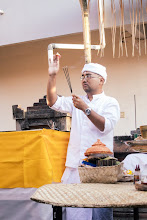I have some favorites RAW image editing tips using Camera Raw on Adobe Bridge. It’s so good and you may not even need to open Photoshop. Some of this great stuff wasn’t here when CS3 first launched, so before you start, go to Help > Updates to ensure you have the latest versions.
Adobe Bridge also can copying your images from your memory card into individual folders, and back them up while it’s at it: go to File > Get Photos From Camera.
Here are some of my favorites tips on Camera RAW Adobe Bridge:
Clarity slider in Basic panel Find the new Clarity slider on the Basic panel, and crank it up. Essentially, it adds midtone contrast to make your image pop all the more.
Sharpening in RAW Your best bet used to be to sharpen in Photoshop. Now, with Camera Raw’s excellent sliders, and the fact that the sharpening is done to the luminance data (essentially helping you avoid sharpening noise), you may want to use Camera Raw’s sharpening tool on your JPEGs and TIFFs, too.
Click on the Detail tab (symbolized by two small triangles). Then, to harness the full power of sharpening, zoom in to 100% or more.
The Alt key on a PC or (the Option key on a Ma
c) is your best friend when you’re using all of these sliders. Hold it down when you move the Amount slider to hide the color and see what happens to your luminance data as it gets sharpened.
As with Photoshop’s Smart Sharpen and Unsharp Mask tools, the higher the radius, the more pixels on either side of an edge get sharpened. Hold down Alt (Option) to see that effect in action.
Similarly, hold down Alt (Option) to see w
hat happens when you move the new Detail slider left to prevent haloes, or move the new Masking slider back and forth to determine how much detail within the edges gets sharpened. (The screengrab shows Masking at work.)
Healing in Raw Sometime we probably have a little dust on our camera sensor or lens. Without Photoshop, we can fix it on RAW image. Grab the Retouch tool from the toolbar at the top of the screen, and click on your bad spot to surround it with the red circle. Use the Radius slider to make sure it is encompassed. Then find a good area and drag the tethered green circle over a patch that Camera Raw can use to heal your dust spot. Of course, this works on blemishes, too. And, if need be, you can switch the function type to "Clone."
Zoom and Compare in Bridge One of the most frustrating tasks in the old Bridge was trying to compare two images. But now you can select and compare as many as you want just by holding down Shift and clicking the first and last of a set with your mouse. Or, to select a few at a time, click on them while holding down Control (Command on a Mac). Then, to examine a detail for sharpness or facial expression, click on one or all of the images to bring up the magnifier.
Stack them into a group In order to avoid an enormously crowded Bridge window, pile all of those shots into a stack. Just select them and go to Stacks > Group as Stack.
Once they’re stacked, a small number will show up in the upper-left corner of the stack telling you how many are present. Click it to show or hide the group. Then, to see them all in the Preview window, click the edge of the bottom image in the pile. To see only the front one, click the bottom of the pile again.
Buy Adobe Photoshop CS3 complete with Adobe bridge or Adobe Creative Suite CS3 Design Standard full with tutorial
read more blog11

 RSS Feed (xml)
RSS Feed (xml)













